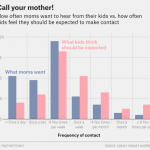I wanted to make sure that if you read only one of my links this week, you saw the story about the nurse at Guantanamo Bay who is refusing to participate in forcefeeding the hunger striking prisoners.
Word of the refusal reached the outside world last week in a call from prisoner Abu Wael Dhiab to attorney Cori Crider of the London-based legal defense group Reprieve. Dhiab, a hunger striker, described how a nurse in the Navy medical corps abruptly refused to “force-feed us” sometime before the Fourth of July — and disappeared from detention center duty.
There’s another kind of heroism on the march in Memphis, where the police department has been working hard to find a better way for officers to handle confrontations with the mentally ill. In other departments in United States, an encounter with police is very dangerous for an unstable or delusional person, who may not respond to officer’s demands, and may be beaten or shot when the officers escalate.
Officer Nigel Payne, twenty-seven, a chatty Memphis cop, surveys the bedroom of a garbage-strewn apartment in a rough section of town. Three other officers have just handcuffed a skinny twenty-two-year-old wearing stained sweatpants and a loose T-shirt. The distraught man is weeping and agitated. He insists between sobs that his mother’s boyfriend, who is watching a huge TV in a dim room nearby, attacked him. However, the cops had seen the youth beating up the older man when they responded to a domestic violence call.
Payne, a designated Crisis Intervention Team officer, arrives moments after his colleagues, dispatched specifically to settle people who may be psychologically disturbed. As the other cops retreat into the hall, he speaks softly to the young man, trying to calm him down and draw him out. He places a hand on the kid’s shoulder and inquires if he has been hurt. Then he asks him if he has any history of mental illness. Still crying, the youth mutters something about ADHD…
A half-hour later, Payne has the kid in the back seat of his cruiser. “So, what kind of music do you listen to? ” he asks. There are muffled sobs. “You with me back there? Talk to me, man. If you black out on me, I don’t know how much I can help.”
The officer cues up Lil Wayne. As we drive through the empty streets toward the county lock-up, he tells me that he puts all sorts of music on his smart phone so he can play whatever his prisoners want to hear. He figures it will soothe them, and he says some even sing along. By the time we reach the facility, where the man will be charged with assault, he has stopped crying and writhing.
Payne is one of 275 Memphis patrol officers—one-fifth of the force—with a CITdesignation. They wear a CIT emblem pin on their uniforms, to tell people (especially those with mental illnesses) that they have the expertise. While all of them volunteered, CIT officers are chosen for their judgment and communication skills, as well as a demonstrated empathy for those living with mental illness. The work is not for everyone.
CIT training involves complex role-playing scenarios; detailed information about psychological conditions, medications, and their side effects; and practice in verbal de-escalation techniques. The trainees meet with people who have emotional disorders. They learn that hollering traditional “compliance” commands—“Police! Drop the weapon!”—at someone who is delusional or hearing voices will almost certainly make the situation worse.
I’ve read before about growing replacement organs outside the body, but I hadn’t thought much about the how of the process besides setting up a degradable scaffold, seeding it with cells, and nourishing them as they grow. This article in Nautilus showed me one necessary component that a lot of scientists missed for a long time:
In Langer’s lab, Niklason began work on something that, at the time, few people in the world had considered. She knew that cells in our blood vessels were subject to the push and pull of flowing blood every second of every day. Without feedback from flowing liquid, blood vessels lose their strength and stability and eventually waste away. Therefore, to convince human cells to build a stable, strong, flexible tube, one that could be surgically implanted and would thrive in the body’s tumultuous environment, she would need to design an apparatus to pulse the growing cells like the human body does.
It seemed logical to her. But in the mid-1990s, this was anything but logical. Most biologists who were trying to coax cells into forming tissue attempted to do so through entirely chemical means. Figure out just the right cocktail, the magic blend of ingredients, and feed that to cells to get them to behave the way you wanted.
Also from the annals of ingenuity. this little featurette on the world’s roundest object was a delight to watch. See if you can guess what it was needed for before you watch — it wasn’t just an attempt to set a Guinness record!
I can’t promise anything so lofty about the next project, but it’s also quite an achievement in it’s own way. After a conversation on tumblr, a Nietzsche-themed relyricization of “Call Me Maybe” was born. Here’s an excerpt of the lyrics:
Hey, Zarathustra
spoke, “Have no pity!”
Cause time will someday
Obliterate meHey, what’s it all mean?
We suffer greatly
And time will someday
Obliterate meAnd Christianity
will never taint me
For time will someday
Obliterate me!
And here’s the song for your streaming pleasure.
These quick takes may be declining slightly with respect to the impressiveness of the ingenuity linked, but, trust me, the absurdity quotient is on the rise. Nintendo has released a game that… you know, I can’t beat the description from The New York Times’s review:
It’s weird that anyone would make a game about the tension over paying for modern video games. It’s also weird that this someone would be Nintendo, a company that mostly charges for its products the old-fashioned way: Pay $40 to $60 first, then play as much as you want. Weirdest of all might be the game Nintendo has made about this stuff, a tragicomedy called Rusty’s Real Deal Baseball that’s partly about the appeal of baseball but also about whether the player is good enough to pay less than the asking price for each of the game’s 10 interactive chapters. The way we buy is the game within this game, the “Mouse-trap” of this “Hamlet.”
…Initially, Rusty gives away a free sample, a handful of challenges from the first of his games, a hitting test fittingly called Bat and Switch. To play more modes, you will have to pay.
This is where Nintendo toys with convention. You’re supposed to haggle with Rusty, who, remember, is a virtual dog, not a living person. You’re supposed to get him to lower his price for the rest of Bat and Switch and for his other nine games. According to the plot, Rusty is stressed. His wife has left him. He’s overwhelmed by his 10 kids. He’ll bend to make a sale. One of his kids even coaches you about how to haggle with his dad, how to flatter, cajole or hardball your way to a lower price. Press Rusty well enough, and each game can be had for less than $2.
Finally, there’s a charming photoshoot via The Story Museum featuring authors dressing up as their favorite characters from childhood stories. I liked looking at all of them (and had never heard of some!), but my favorite is Philip Pullman as Long John Silver below.
And, starting next week and going on until Halloween-ish, one of the quick takes is going to be reserved for progress pics from my about-to-be started Halloween costume. I’ve got a lot of work to do (sewing, embroidery, wiring, and a bit with fimo clay), so I’m hoping precommiting to posting on Fridays will keep me moving forward. You all should scold me if I don’t keep up with this.
For more Quick Takes, visit Conversion Diary!














